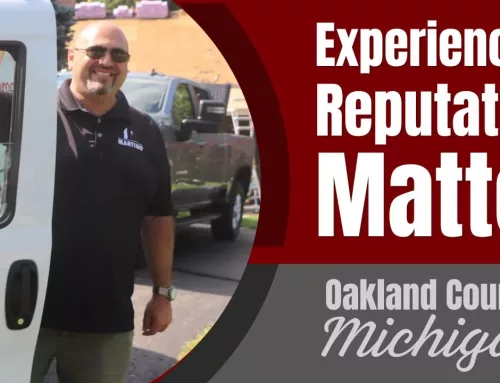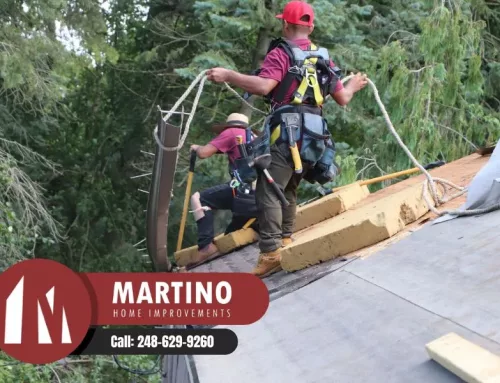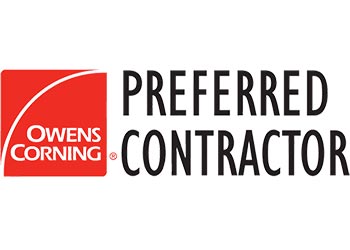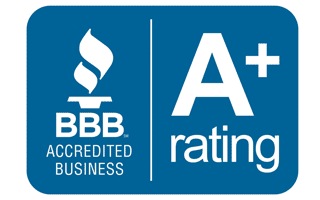As the winter months approach, Michigan homeowners need to take the necessary steps to get their roofs winter-ready. One of the primary reasons for winterizing your roof is to shield your home from the elements. Snow, ice, and freezing temperatures can wreak havoc on your roof, causing leaks and structural damage. By adequately preparing your roof, you can prevent these issues and ensure that your roof protects your home throughout the colder months.
- Essential Tips for Michigan Homeowners to Get Your Roof Winter-Ready
- How to Prepare for the Cold Weather
- Signs Your Roof May be Damaged
- Related Posts
- Oakland County Roofing: Why Experience and Reputation Matter
- Common Roofing Problems in Oakland County and How to Prevent Them
- Experience Matters: Why Michigan Homeowners Turn to Our Trusted Roofing Services
- Roofing Contractors in Michigan: Why Martino Home Improvements Stands Out
- What Every Homeowner in Oakland County Should Know About Roof Restoration
How to Prepare for the Cold Weather
From safeguarding against water damage to improving energy efficiency, taking the necessary steps to prepare your home for the cold weather will help you avoid costly repairs and maintain a cozy living space. By focusing on critical areas such as your roof, insulation, and gutters, you can ensure you’re well-prepared to withstand the harsh winter weather. Let’s explore some essential tips to help you get your home winter-ready.

Trimming Trees: Essential for Winter-Ready Roofs
One crucial step in winter preparation is trimming trees near the roof. Neglecting this task can lead to significant damage and costly repairs during the winter months.
Overhanging tree limbs pose severe risks to roofs. Strong winds and heavy snowfall can cause these branches to break and damage roof shingles. Moreover, fallen leaves and other tree debris can clog gutters, preventing proper drainage and leading to water backup and ice dams.
To prevent such issues, it is recommended to trim trees before winter arrives. This ensures that any weak or overhanging branches are removed, reducing the risk of roof damage.
By proactively trimming trees near the roof, homeowners can help prevent ice dams, gutter blockage, and roof damage caused by winter storms. This maintenance task not only safeguards the structural integrity of the roof but also promotes overall safety and reduces the likelihood of extensive water damage.
Clean Gutters and Downspouts
During the winter months, gutters and downspouts are crucial in directing water away from your home. However, if they are clogged with leaves, debris, or even ice, water can back up, causing damage to your roof, walls, and foundation.
To avoid these potential problems, it is essential to clean your gutters and downspouts before winter sets in. Start by checking that you have the right ladder for the job and ensure it is stable and secure. Put on gloves to protect your hands, and use a trash bag to gather the debris as you clean.
Once you have removed most of the debris by hand, rinse any remaining dirt and grime using a garden hose. Ensure that water flows freely through the downspouts and away from your home.
By taking these simple maintenance steps, you can prevent water damage, ice dams, and other issues arising from clogged gutters and downspouts. Pay attention to this critical task when winterizing your Michigan home.
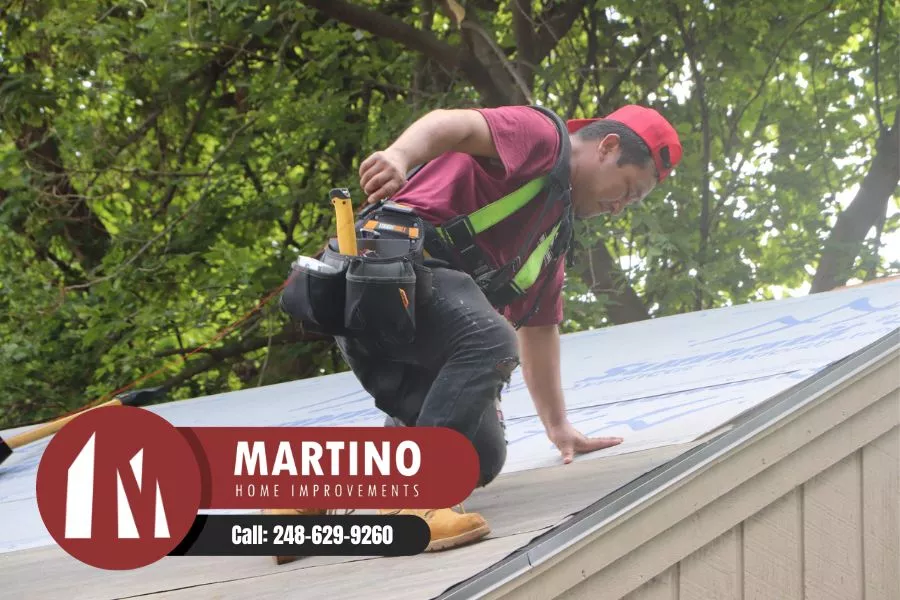
Ventilation and Attic Insulation
During the winter months, inadequate ventilation and insulation can lead to the formation of ice dams on your roof. These ice dams result from melting snow refreezing at the eaves, causing water to back up and potentially damage your roof and interior.
To prevent ice dams and potential damage, it is crucial to have good attic insulation. Proper insulation helps maintain a consistent temperature in your attic, preventing warm air from escaping and melting snow prematurely. This reduces the chances of ice dams forming in the first place.
Attic ventilation is equally important as it allows moisture to escape, preventing condensation buildup. Moisture accumulation can lead to mold growth, rotting, and other structural issues. Adequate ventilation ensures proper airflow, keeping your attic dry and minimizing the risk of damage.
To ensure your attic is ready for the winter, conduct a thorough checkup. Look for signs of leaks, such as water stains or dampness on the attic ceiling, which may indicate a roof problem. Additionally, watch for signs of animal infestation, like nibbled insulation or droppings. These issues need to be addressed promptly to avoid further damage.
By prioritizing attic ventilation and insulation, Michigan homeowners can protect their roofs from winter-related issues and enjoy increased energy efficiency throughout the colder months. Pay attention to these crucial aspects of winter-proofing your home.
Get a Roof Inspection
One essential step to get your roof winter-ready is to schedule a professional roof inspection. A thorough inspection ensures that your roof is in good condition and can withstand the harsh winter weather.
During a roof inspection, a trained professional will visually examine the entire roof for any signs of damage or wear. This includes checking for missing or damaged shingles, buckled or warped shingles, and signs of water leaks, such as stains or dampness in the attic.
The inspector will also pay close attention to the ridge shingles and metal flashing, as these areas are prone to damage and can compromise the integrity of your roof. They will inspect the gutters and downspouts for any blockages or damage that could prevent proper water drainage during winter storms.
By getting a roof inspection, you can identify and address any issues before they worsen or cause more extensive damage. Timely repairs or replacements can help prevent leaks, ice dams, and potential roof collapse during the winter months.
Remember, a small investment in a roof inspection can save you from costlier repairs and headaches down the line. Be sure to withstand the elements before winter hits to ensure your roof is ready to withstand the elements. Schedule a professional roof inspection today to give yourself peace of mind and protect your home from winter’s harsh effects.
Signs Your Roof May be Damaged
As a Michigan homeowner, it’s essential to know the common signs that indicate your roof may be damaged and need attention before winter arrives. These signs include:
1. Leaks: If you notice water stains or dampness on your ceiling, it could be a sign of roof damage. Leaks can occur due to cracks or holes in the roof, missing shingles, or deteriorated flashing.
2. Missing shingles: Check your roof for any visible gaps or areas where shingles are missing. This can leave your roof vulnerable to leaks and water damage during winter storms.
3. Sagging areas: A sagging area on the roof can signify structural damage or excessive weight from snow and ice. It’s crucial to address this issue promptly to prevent further damage and potential roof collapse.
4. Dark spots on the ceiling: Dark spots on your ceiling could indicate moisture and water damage caused by a leaking roof. Addressing this issue promptly can prevent more extensive water damage and costly repairs.
Various factors, such as the roof’s age, severe weather conditions, improper installation, or lack of regular maintenance, can cause these issues. By identifying these signs early on, you can take the necessary steps to address the damage and ensure your roof is ready for the harsh Michigan winter.
Remember, getting a professional roof inspection is essential to accurately assess the condition of your roof and determine the most appropriate repairs or replacements needed. Taking proactive measures can help avoid costly repairs and potential safety hazards during the colder months. Call us today at Martino Home Improvements for a roof inspection on your home.

